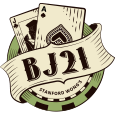A couple of ideas -- new twists
Here are a couple of ideas to think about since you are asking about the perfect C system.
For a 2D Face-up Game (it�s my game of choice):
A friend asked me to develop a count system that had the following objective: (1) a high BC (close to 1.0), (2) IC of 1.0, and (3) a more accurate way to determine TC. The following idea works best in a 2D face-up game (see below for ideas in SD). I�ve relied mostly on Richard Reid�s ideas to build this system.
I�ll reveal the broad framework without giving away some of the key shortcuts. Let�s use Hi-Lo for illustrative purposes. As a result, in 2 decks, there are 104 cards: 8 aces, 32 Ten-value cards (�40� high cards), 24 neutral cards, and 40 low cards. Here are the guidelines. Instead of employing the cancellation method, as the case with traditional the card counting, you employ the summation method. To get an IC of 1.0, you have to keep a side count of aces; that is to say you keep a separate count of aces and ten-value cards. Count each card dealt (including the burn card, if seen). To determine the RC, subtract the summation of low cards less the summation of high cards. To determine the TC, take RC and compare it to the number of unseen cards (there�s a couple of nice tricks to do this painlessly). To determine whether to buy insurance, you need to know the ratio of tens to non-tens remaining (again, there�s some nice tricks developed). Recall, during the insurance bet, the dealer gives the player additional time to decide, so it�s nice to have the extra time.
The count has 4 sets of digits and its goes like A-B-C-D or 7 - 4 - 2 - 15 (note the maximum is 40 - 32 - 8- 104) or a RC of +1, a TC of ~+1.2, and of the 89 cards remain, 28 cards are tens-value. Let�s say the count is now 12 - 5 - 2 - 23, the RC jumps to +5 and the TC goes to ~+6.4. Suppose we are at a different shoe, and the count is 16 - 6 - 8 - 40 for a RC of +2 and TC of about +3.3. Here, you would not make a bet despite a TC north of +3.
For a SD game:
I started this system during my days playing SD and needed a more accurate TC so I started to count all the cards that were dealt (I now had a 100% accuracy with respect to penetration). Then I started to keep a count of aces. Later I switched from Hi-Lo to KO and the win rate just shot up.
For TC conversion, I just use an index of the RC and number of cards remaining in the deck, i.e. RC of +2 with 16 cards dealt - that means there are about 34 cards remaining (the actual number is 36, I use 34 because it is easier to work with 50 rather than 52). That means a +2 RC with about 68% of the cards remaining (the actual number is 69.2%) yields a TC of about +3 (the actual TC is +2.89). Here�s my index (Cards Remaining as a %, Conversion Factor (to get to TC), Actual Cards Remaining assuming a 50 card-deck):
CR CF ACR
90% 1.11 45 (notice the relation between ACR and CR)
80% 1.25 40
70% 1.43 35
60% 1.67 30
50% 2.00 25
40% 2.50 20
30% 3.33 15
20% 5.00 10
As you can see some of Richard Reid�s ideas are very powerful.
To summarize, since I know how many cards are dealt, I know how many cards are remaining and to convert from RC to TC, I can remember the conversion factor or remember reciprocals (again, this is an approximation method
since the actual TC will be less).
Cheers.










